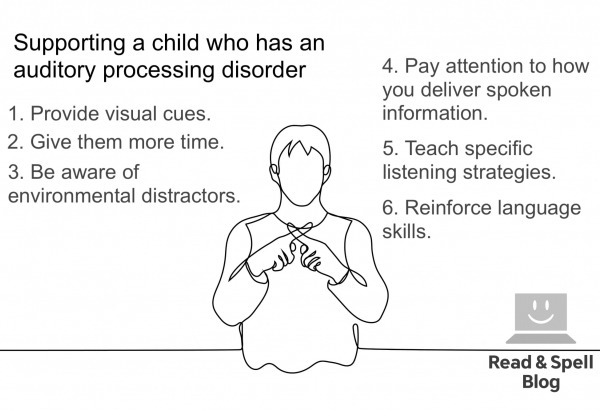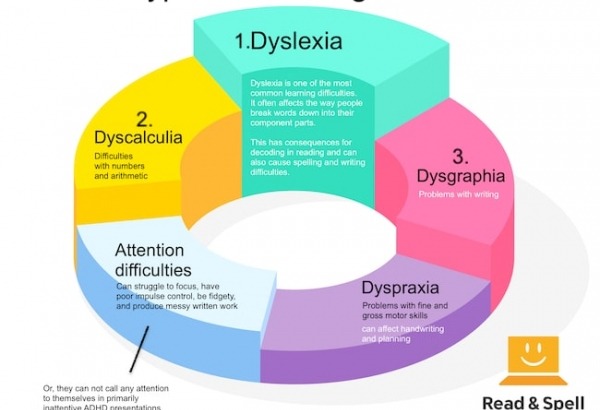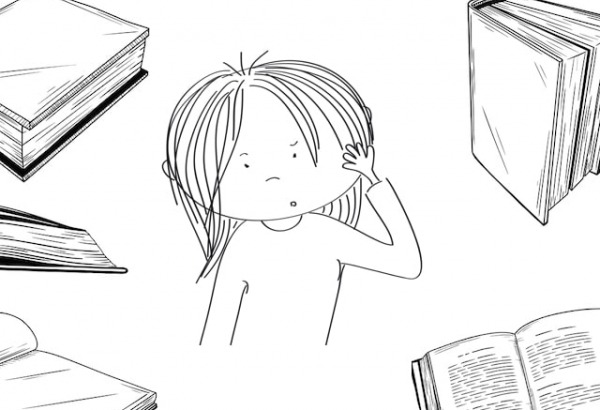Handwriting difficulties

When we write, we want the language we produce to be recognizable to others. Our handwriting should be legible so that it doesn't hinder the reader’s comprehension and our text must conform to established norms when it comes to punctuation, formatting and spelling.
But putting words down on paper is not as straightforward as it may seem. In fact, there’s a complex process of orthographic encoding that we rely on to help us form the letters in words and use them correctly.
If the mechanics involved in writing cause cognitive or physical strain, as is the case with most common handwriting problems, this can affect our thought process and reduce the complexity of our writing. It also results in feelings of frustration and low self-esteem.
For a child with dysgraphia or dyspraxia, conditions that often cause poor handwriting, producing written language is a struggle that can drastically affect performance at school and get in the way of a child expressing him or herself in writing.
Students who experience problems with handwriting may be highly intelligent and creative individuals who are also proficient readers. Nonetheless, they often produce written work that contains poorly formed letters which are unevenly spaced and without standardized spelling or punctuation.
Thoughts might be expressed in bullet like form or as run on sentences and the quality of vocabulary may be below that which the student is capable of in spoken activities.
If dysgraphia is the cause, it's worth noting is is somewhat less well-known than other learning difficulties. Unfortunately, this means a child may first be accused of having messy handwriting, being lazy or not trying on assignments.
For adults, electronic communication and typed documents are more important today. But because writing things down by hand is still central to secondary school classroom activities, particularly in lower grades, recognizing handwriting problems early on is key.
While there is no cure for the handwriting problems caused by dysgraphia, there are ways parents and teachers can help. Chief among them is introducing a computer and helping the child learn touch-typing, so school assignments and class notes can be typed rather than written out with pen and paper.

What is dysgraphia?
Dysgraphia is a condition characterized by problems with writing, including poor handwriting. Everone with dysgraphia will have a different set of symptoms.
A child with dyslexic dysgraphia (different from dyslexia but note there's also a link between poor handwriting and dyslexia), can copy written work without problems but struggles to produce original text written by hand and often will also have poor spelling abilities.
Motor dysgraphia, like dyspraxia, is when problems with writing are caused by difficulty developing the fine motor skills that enable us to hold a pen or pencil. Writing and drawing will be hard for the child, but spelling may not be affected.
Spatial dysgraphia causes problems in all written work as it has to do with issues of understanding space, including the space on a page and the spatial dimensions required to form individual letters. Regardless of the type, when a child has illegible or poor writing, it can have a devastating effect on their ability to be successful at school.
Recognizing handwriting problems
Learning to recognize common signs and symptoms of dysgraphia is important for parents and teacher, as a learning difficulty that is untreated can severely impact a child’s self-esteem.
A student who has illegible or poor writing may experience physical pain when forced to write. They may hold the pen or pencil in an odd way, struggle with aligning their wrist and body to the paper and appear distressed before, during and after the activity. Often taking notes and copying text takes a student with dysgraphia significantly more time than his or her peers and efforts that involve thinking and writing at the same time may not be successful.
In examining written work for students with illegible or poor handwriting, you may also commonly notice an inconsistent use of capital and lower-case letters, poor spelling, missed or misused punctuation, difficulty with keeping letters on the line and staying in margins and an excessive amount of white-out/corrector pen use and erasing.

Tips for teachers
If you know a child in your class has problems with writing, there are many aspects of your lesson you can change to create a more dysgraphia-friendly school environment.
Time
Always provide extra time for tasks that require writing by hand. This can include copying from the board, note-taking, filling in activity worksheets and even taking quizzes and exams. For longer assignments completed outside of school, suggest the student submits a typed document or extend deadlines to give them additional time.
Task type
If classroom activities require producing written responses, have students work in groups so the child with dysgraphia is able to participate verbally and ask a classmate with strong handwriting to do the recording. Stick to matching exercises vs. fill-in-the-blank when possible and avoid asking open answer questions on exams, unless you are allowing the student to use a computer and type his or her answer.
Notetaking
Prepare printed copies of class notes beforehand or pair students up so they have a note-taking buddy. A child with dysgraphia can get so distracted trying to record what has been said or written on the board that they fall behind in learning. Reducing or eliminating the need for them to take notes means they can focus on the content and ideas presented in your lesson.
Materials
As is the case with dyspraxic students, problems with handwriting can sometimes be helped with the right materials. Papers with bright, thick and colored lines are often helpful, as is graph paper, which aids with letter spacing. You may also consider providing rubber grips for writing utensils and thicker stemmed pens and pencils.
Writing
Learning how to write requires ample practice and opportunities to compose text of various types. Because problems with handwriting often have no impact on reading skills, a child with dysgraphia can develop strong writing skills along with his or her peers, if allowed to complete productive exercises with the help of technology.
Spelling
Learning spelling entails writing a word down multiple times until the letters and order are automatized. Make sure to provide plenty of typed practice for children with writing difficulties and insist on oral quizzes to check spelling knowledge. A computer program can also be of help.
Typing
Given the importance of computers and printed text, it can save a child ample amounts of time if he or she is taught how to type without looking at the keyboard. Touch-typing not only makes completing assignments quicker but encourages the translation of ideas, with thoughts flowing freely through the fingertips and onto the screen.
How technology has changed things
It used to be important to have good handwriting. Luckily, over the past twenty years, computers have made most forms of handwriting obsolete, as email has replaced written letters and electronic documents and forms have become the norm. It’s important for children who struggle with handwriting to know that there are plenty of alternatives to writing by hand outside of elementary school.
In fact, learning to touch-type and to use computers will give them an edge over their peers in later grades, as most assignments in high school and beyond won’t be accepted if they are handwritten.

Even note-taking has become much more an electronic activity today vs. something we do with pen and paper. College students typically bring laptops to class and smartphones and tablets can be used to record lectures.
However, taking notes and writing lengthy assignments are greatly facilitated if an individual has the ability to type without looking at the keys. Learning touch-typing makes it easier to type instantaneously, create text versions of audio and compose complex prose, given ideas flow freely and aren’t interrupted by the “hunt-and-peck” method’s reliance on visually searching the keyboard for individual letters.
Touch-type Read and Spell
For a child with dysgraphia, learning to type can be a liberating experience. Mastering touch-typing is often the first time they experience true creative expression in writing. The Touch-type Read and Spell program is used by children with dysgraphia, dyspraxia and dyslexia because it strengthens literacy skills at the same time as it teaches typing.
TTRS takes a multi-sensory approach. Students learn through a combination of visual and audio prompts, paired with the physical act of typing. This is why the program is useful for children who struggle with dyslexia and other specific learning difficulties, as well as Down syndrome and those with sensory impairments.
TTRS makes learning fun and encourages each student to work through the course at his or her own pace by breaking the learning into modules, with plenty of praise delivered at each step along the way.
Successfully completing modules in a touch-typing course can be just the motivation a student with dysgraphia needs, particularly as they are likely to have negative associations with writing at school. As typing entails not just finding keys but composing words and sentences, the process also strengthens spelling and reading skills.
Do you have experience helping a child with dysgraphia? Send us an email and join the discussion!
For learners who struggle with dysgraphia
TTRS is a program designed to get children and adults with dysgraphia touch-typing, with additional support for spelling.
Chris Freeman
TTRS has a solution for you
An award-winning, multi-sensory course that teaches typing, reading and spelling

How does TTRS work?
Developed in line with language and education research
Teaches typing using a multi-sensory approach
The course is modular in design and easy to navigate
Includes school and personal interest subjects
Positive feedback and positive reinforcement
Reporting features help you monitor usage and progress














